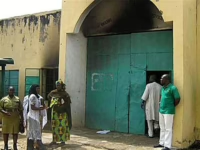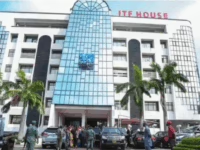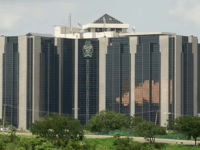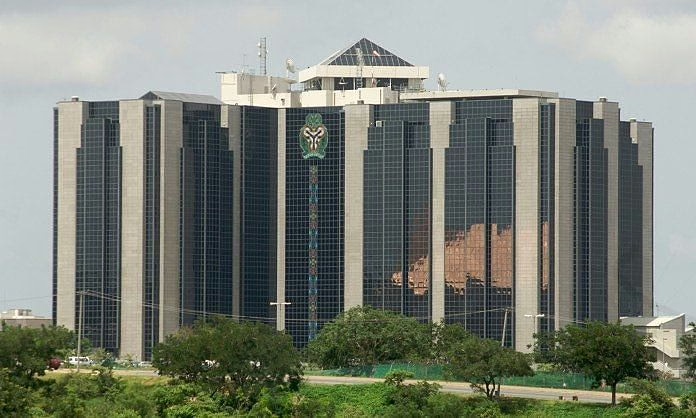After a five-year interval, the Central Bank of Nigeria (CBN) has opted to lower its key interest rate, reflecting a measured adjustment in its monetary policy as inflation trends show consistent improvement.
Concluding its two-day Monetary Policy Committee (MPC) meeting in Abuja on Tuesday, the CBN decreased the Monetary Policy Rate (MPR) by 50 basis points, bringing it down to 27 percent. This move initiates a cautious easing cycle aimed at fostering economic expansion while maintaining overall macroeconomic balance.
The last time the benchmark rate was cut was in September 2020, when it dropped from 12.5 percent to 11.5 percent.
This recent reduction is intended to invigorate economic activity amid easing inflationary pressures and enhanced macroeconomic conditions.
In conjunction with the rate cut, the MPC implemented targeted liquidity management strategies to ensure a balanced approach. These included lowering the Cash Reserve Requirement (CRR) for commercial banks from 50 percent to 45 percent, maintaining the CRR for merchant banks at 16 percent, and introducing a 75 percent CRR on public sector deposits not held in the Treasury Single Account (TSA). This latter measure serves as a tightening mechanism to absorb surplus liquidity stemming from increased fiscal inflows.
The decision to reduce the benchmark rate was met with approval from employers and economic analysts, who viewed it as a timely intervention to stimulate growth following an extended period of stringent monetary policy.
Adewale-Smatt Oyerinde, Director General of the Nigeria Employers’ Consultative Association (NECA), lauded the policy adjustment but stressed the importance of complementary fiscal reforms. He highlighted the need for exchange rate stability and advancements in the agricultural and energy sectors to maximize benefits for businesses and households alike.
Economic specialists such as Dr. Ayo Teriba and Dr. Muda Yusuf underscored the significance of the easing measures, pointing to the encouraging downward trend in inflation and the potential for increased liquidity to bolster investment and job creation.
Despite widespread optimism, some experts urged caution. Dr. Paul Alajre warned against overreliance on the apparent inflation decline, citing methodological changes that could distort the data. Others emphasized the necessity for the government to pair monetary easing with sustained structural reforms to foster an environment conducive to inclusive economic growth.
As part of its liquidity management framework, the CBN also imposed a 75 percent CRR on deposits from government entities not domiciled in the TSA, aiming to curb excess liquidity and uphold macroeconomic stability.
According to a directive issued during the administration of the late former President Muhammadu Buhari, exempted government agencies are defined as “profit-oriented government business entities that remit dividends to the Federal Government of Nigeria.”
The affected ministries and agencies include the Ministry of the Federal Capital Territory, select universities, Bank of Industry (BoI), Nigeria Railway Corporation, Federal Mortgage Bank of Nigeria, Bank of Agriculture, National Communication Satellite Limited, Galaxy Backbone Ltd, Ajaokuta Steel Company Ltd, and the Nigerian Export-Import Bank.
CBN Governor Olayemi Cardoso explained that the 75 percent CRR on non-TSA public sector deposits is designed to address the surplus liquidity in the banking system, which has been driven by increased fiscal disbursements from improved government revenue streams.
“The Committee introduced a 75 percent CRR on non-TSA public sector deposits to enhance liquidity management,” Governor Cardoso stated at the conclusion of the MPC meeting held on September 22-23 in Abuja, with full attendance from all 12 members.
He noted that the MPC’s decision to reduce the MPR by 50 basis points to 27 percent was influenced by five consecutive months of declining inflation and strengthened macroeconomic stability.
The Standing Facilities Corridor was adjusted to +250/-250 basis points around the MPR, while the CRR for commercial banks was set at 45 percent and for merchant banks at 16 percent. The liquidity ratio remained steady at 30 percent.
The MPC also fine-tuned the Standing Facilities corridor to enhance the efficiency of the interbank market and improve the transmission of monetary policy.
Governor Cardoso emphasized the bank’s objective to bring inflation down to single-digit levels. He acknowledged the potential inflationary and exchange rate volatility risks associated with the upcoming election year.
He further reported that Nigeria’s gross external reserves stood robust at $43.05 billion as of September 11, 2025, up from $40.51 billion at the end of July 2025, providing an import cover of 8.28 months.
Additionally, the second quarter of 2025 recorded a significant current account surplus of $5.28 billion, compared to $2.85 billion in the first quarter.
“The Committee recognizes that the current macroeconomic stability allows monetary policy to support economic growth, but vigilance is necessary to mitigate risks from excess liquidity,” the governor remarked.
The MPC expressed satisfaction with key economic indicators, including falling inflation rates, stable exchange rates, improved external reserves, and stronger output growth. Nigeria’s economy expanded by 4.23 percent in Q2 2025, largely driven by a 20.46 percent rebound in the oil sector.
The decision to lower the MPR was based on sustained disinflation over the past five months, projections of continued inflation decline through 2025, and the imperative to support economic recovery.
For the MPC, the easing of inflationary pressures is attributed to monetary tightening, exchange rate stability, increased capital inflows, and a surplus current account balance, all of which have helped anchor inflation expectations.
Additional factors contributing to the inflation slowdown include moderated prices of Premium Motor Spirit (PMS) and increased crude oil production. The Committee views the stable macroeconomic environment as providing room for monetary policy to back economic recovery.
Employers and Economists Applaud Rate Cut, Call for Complementary Fiscal Actions
In response to the MPC’s 50 basis point reduction of the MPR to 27 percent at its 302nd meeting, NECA’s Adewale-Smatt Oyerinde commended the CBN’s decision.
The MPC also announced other policy adjustments: lowering the CRR to 45 percent for Deposit Money Banks, maintaining 16 percent for Merchant Banks, imposing a 75 percent CRR on non-TSA public sector deposits, keeping the Liquidity Ratio at 30 percent, and adjusting the Asymmetric Corridor to +250/-250 basis points around the MPR.
Oyerinde highlighted that the move follows a steady decline in headline inflation, which eased to 20.12 percent in August from 21.88 percent in July, according to the National Bureau of Statistics. He noted that this moderation allows policymakers to balance price stability with growth stimulation.
However, he cautioned that the positive impact of the modest MPR cut depends on its effective transmission to the real economy.
He explained that reduced borrowing costs could enable businesses to access affordable credit, expand investments, and generate employment, but high CRR levels and other liquidity constraints might limit these benefits.
Oyerinde also pointed out that food inflation remains high at 21.87 percent, exerting pressure on households and diminishing disposable incomes. He added that elevated operating costs driven by raw materials, energy, and logistics continue to challenge local businesses, while international investors seek consistent reforms and policy stability before committing to Nigeria.
He urged the government to complement the MPC’s monetary easing with broader reforms, including exchange rate stabilization to curb imported inflation, enhanced security in agricultural zones, increased mechanization in farming, and improvements in energy, transportation, and regulatory frameworks.
Dr. Ayo Teriba, Chief Executive of Economic Associates, remarked that after eight months of declining inflation, an easing of the MPR was anticipated, given the aggressive tightening since early 2024.
He noted that while the MPC had raised rates in consecutive meetings in 2024, it held rates steady in 2025 until now.
“The tightening was in response to rising inflation and exchange rate instability, issues that have since been addressed. With inflation decelerating and GDP growth accelerating, a modest easing to support growth was warranted. The MPC’s 50 basis point cut on the MPR, combined with a 250 basis point narrowing of the corridor and a CRR reduction, totals a 300 basis point easing. The hike in CRR on non-TSA deposits is a prudent measure to mop up excess liquidity. We hope this signals sustainable growth rather than rekindled inflation,” he said.
Dr. Muda Yusuf, Director of the Centre for the Promotion of Private Enterprise (CPPE), praised the CBN’s policy shift as a deliberate move to foster growth and investment after a prolonged period of tight monetary conditions.
“This policy adjustment marks a strategic transition from stabilization to growth acceleration. The five-month streak of declining inflation indicates that prior tightening efforts are bearing fruit. With macroeconomic stability restored, the MPC’s pivot toward growth is both logical and timely,” he stated.
“High interest rates have constrained private sector credit, increased funding costs, and hindered business expansion. By lowering the MPR and CRR, the CBN aims to improve liquidity, reduce borrowing costs, and unlock capital for productive sectors. The 75 percent CRR on non-TSA deposits acts as a safeguard against liquidity shocks from government spending,” he added.
Professor Michael Obadan, an economist and former MPC member, described the easing as a positive development that will support real sector growth after months of restrictive monetary policy.
“It was overdue for the MPC to begin relaxing the tight monetary stance, which had become overly restrictive, especially for real sector development. High interest rates relative to public sector returns have constrained businesses. The reduction in CRR for commercial banks from 50 to 45 percent is a welcome relief, as the previous level was excessively limiting,” he explained.
“The 75 percent CRR on non-TSA public deposits indicates efforts to mop up excess liquidity from government agencies outside the TSA framework,” he added.
Conversely, Dr. Paul Alaje, Partner and CEO of SPM Professionals, expressed reservations about the rate cut, cautioning against interpreting the inflation decline too optimistically due to changes in the inflation measurement methodology.
“From an econometric standpoint, it’s premature to conclude that inflation is truly falling or rising because the base year was adjusted. Until we have consistent year-on-year data from the new base, altering the MPR significantly could be misguided,” he argued.
“A modest 50 basis point cut to test the waters might be acceptable, but anything larger risks manipulating the numbers. Inflation targeting requires accurate data, and changing the methodology midstream is like moving the goalposts during a game,” he added.
Ayokunle Olubunmi, Head of Financial Institutions Ratings at Agusto & Co, observed that the MPC’s decision signals a broadly accommodative monetary stance, aligning with similar moves by central banks in developed economies and across Africa.
























